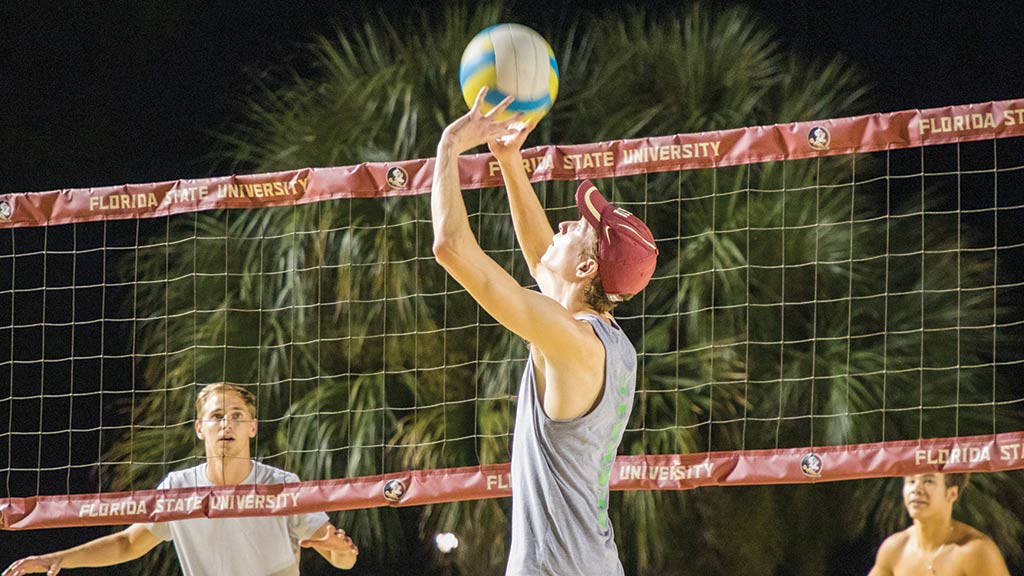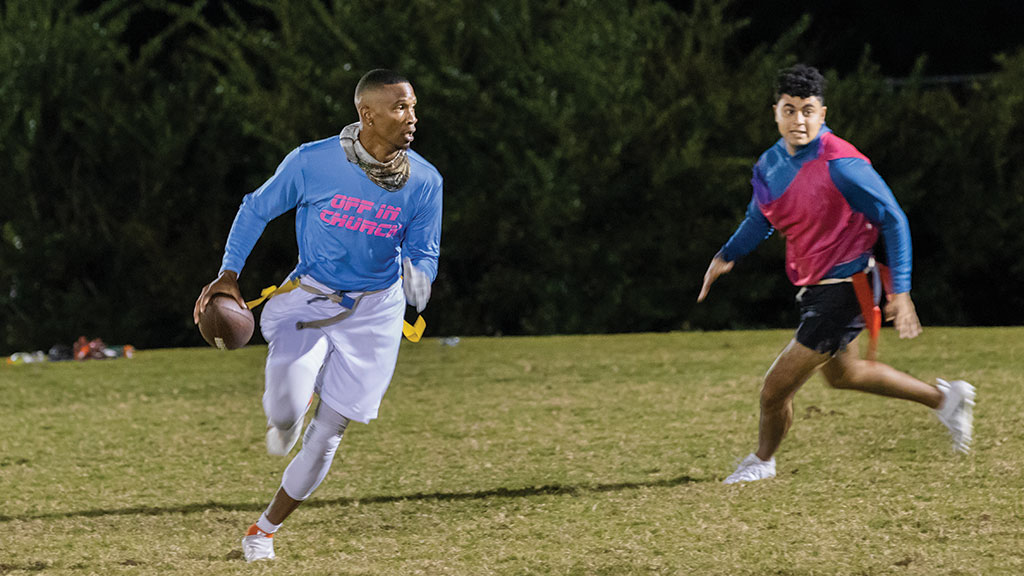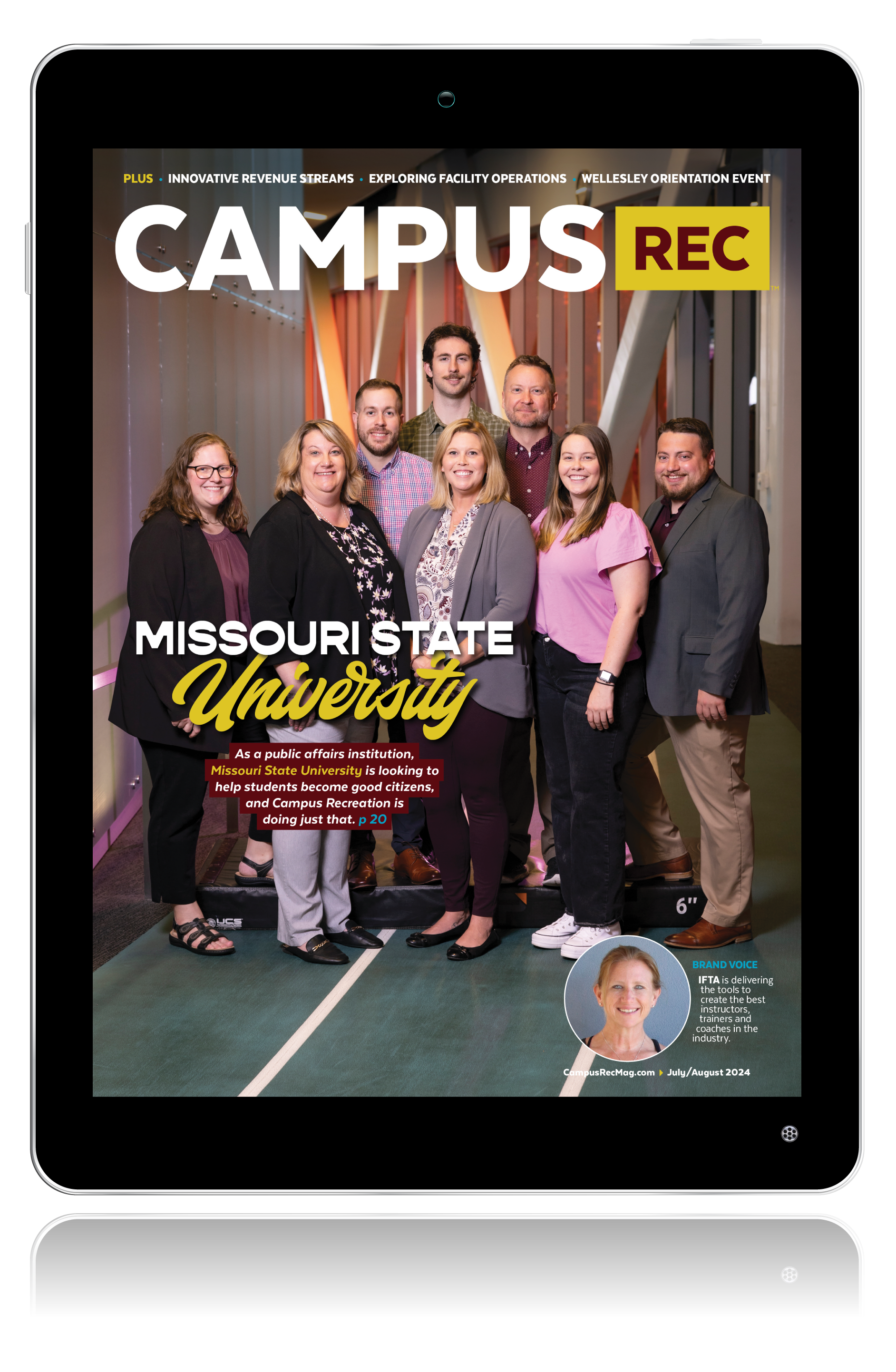As the University of Idaho entered the 2021-2022 academic year, students were excited to get active.
Butch Fealy, the associate director of Recreation and Wellbeing, said their numbers were much higher than 2019.
However, the past year did see some changes to the line-up of competitive sports offered. Fealy shared they still had the more traditional sports but competitively engineered them to accommodate for mask wearing. That included additional rest time and water breaks, scheduling more time for games to allow for those changes.
Plus, club sports had to jump through some new hoops when traveling to Washington and Oregon due to COVID-19 mitigation plans.
In addition, Fealy said other changes have helped:
- Shortening the seasons.
- Taking sports outdoors.
- Offering weekend tournaments like shuffleboard and cribbage — activities that aren’t as stressful.
Ben Holmes, the assistant director of Intramural Sports at Florida State University (FSU), is also seeing “lighter commitment” offerings trending — i.e., two to three regular season games versus four to five.
This also includes single-day tournaments. “We were able to offer a fairly robust schedule with many two-versus-two and three-versus-three options. We learned the popularity of single-day events among our students,” said Holmes. “These had not been a regular offering here. So, we were able to build on that popularity and include more single-day events into our normal schedule that we returned to this past fall.”
They also have learned to reshape traditional offerings. “For example, softball and kickball both had higher roster requirements, but by dropping those numbers we saw full leagues and a small decrease in forfeits because teams weren’t struggling to find players,” explained Holmes.
EXTRA CREDIT: In order to follow the new health and safety guidelines during the pandemic, club sports and intramurals professionals thought outside the box.
But what really proved popular at both the University of Idaho and FSU has been pickleball.
In fact, Holmes said they cannot seem to offer enough pickleball. “This sport is growing at an incredible pace. We had a lengthy waitlist of teams trying to compete in our season in Fall 2021,” he shared.
Beyond pickleball, however, Holmes is seeing fewer students participating in multiple sports. “I believe this is related to a variety of factors, including the increased emphasis on academic standards here at FSU,” he explained. “But we are also seeing so many middle and high school athletes specialize in one sport, so the exposure to those other sports is decreasing and they are less inclined to want to play more intramural sports.”
In fact, high school experience is a challenge that Fealy is having to overcome. “Students think they need to have a really strong skillset to come out and play,” he said. “I don’t know if that is a product of high school or youth club sports. But the goal for me is to make sure everyone knows intramural sports is just another community you can belong to.”
Esports is another community students think they can’t belong to due to lack of skill. Cybbi Barton, the assistant director for esports and intramurals at the University of Michigan, said you need to educate students on that not being the case.
“If you’re in the position to curve the narrative ‘You have to be the best to play with us’ to ‘Hey, you played a video game once? Great, here’s your spot,’ then you’ll see an entirely new population in your space,” said Barton. “Gaming exists in many different areas besides a very competitive scene.”
EXTRA CREDIT: Read about Illinois State University’s thriving esports program.
Another challenge in growing the program is the fact students often don’t know about it until they are juniors or seniors in college. As such, Barton works to keep conversations flowing with coworkers, other units on campus, etc.
All in all, esports will continue to grow in the coming years. “We know this by the history of gaming,” said Barton. “Trends I’m seeing now are more organizational structure and support for women/non-binary/non-man being amplified. I expect to see continued support for underrepresented communities and more accountability for fellow gamers and major corporations.”
Inclusion is a key to keep in mind no matter what format of competitive sport you’re offering. For Holmes, a big part of achieving inclusivity is having the correct language. This includes in training as well as in your rules and on your information pages.
“Our job is to provide a quality experience to everyone that steps into our space. And that begins from the moment they step foot through the door until they are walking out and everything in-between,” said Holmes. “It’s also important to note what your institution is doing so you are providing a consistent approach to that of your campus partners.”
EXTRA CREDIT: Campus rec should take an active role in supporting diversity, equity and inclusion initiatives. One way is through inclusive language.
Fealy noted this starts first with developing policies. In addition, it’s working with your community partners to get the word out your competitive offerings are open to anyone. “And then having those conversations with students who want to participate that may be uncomfortable or need those accommodations,” he said. “Just let them know it’s really simple and everyone’s going to be excited to have them participate.”
When it comes to successfully programming competitive sports in any format, it all comes back to student conversations. As Fealy noted, professionals must meet students where they are at, hearing what they want and shifting to accommodate accordingly.
“Whether it’s your student leaders, your student officials or your participants, just giving five minutes of your time to them could mean the whole world to that person at that time,” said Fealy. “So, take the time, build those relationships, understand how what you do has such an impact on those individual students, and it usually pays you back in a variety of different ways.”












